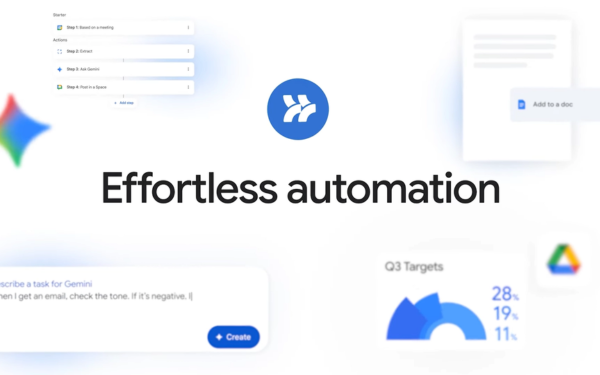Vẻ đẹp của những đóa hoa từ lâu đã là nguồn cảm hứng bất tận…
BigQuery customers save up to 54% in TCO compared to alternative cloud data platforms
Over the last two decades, cloud-based data management and analytics solutions have become more cost effective and flexible than their on-premises counterparts. But even among cloud providers there are differences in cost, flexibility, scalability, and AI readiness that impact a business’s bottom line. Choosing the right enterprise data warehouse (EDW) solution requires designing an effective data cloud strategy and understanding the underlying technology, operational capabilities, and pricing models of potential providers.
TechTarget’s Enterprise Strategy Group (ESG) did an extensive study to compare the quantitative and qualitative benefits that organizations can realize with Google Cloud BigQuery when compared with alternative solutions. Download the full report here.
Let’s look at some of the report’s key findings:
How to choose the right cloud-based enterprise data warehouse
Việc tìm cách giảm thời gian đưa ra thông tin chỉ là một bước trong việc lựa chọn đúng EDW. Các nhóm cũng nên xem xét tổng chi phí sở hữu và các chi phí ban đầu tiềm ẩn, khả năng của giải pháp để mở rộng và thu nhỏ một cách hiệu quả dựa trên nhu cầu, và sự đổi mới liên tục để hỗ trợ dự án dự báo AI, Machine Learning và Generative AI.
Across these three categories, ESG found that BigQuery eliminated upfront investment and planning requirements, reduced operational costs, and improved business agility. In fact, BigQuery customers save up to 54% in total cost of ownership compared to alternative cloud EDW offerings.

Here are some of the key reasons these factors play an outsized role in how and why businesses select their data and analytics platform.
High-performance EDW doesn’t have to break the bank
Investing in an EDW solution is a strategic choice with long-term consequences for data processing. That doesn’t mean it has to be an overwhelming financial decision. BigQuery doesn’t require any upfront investment to save on computing resources. Some providers analyzed in the study require an upfront purchase while others only offer their most competitive pricing to customers who commit to a large upfront purchase.
Signing on for a specific contract period means teams have to plan and size their configurations ahead of purchasing, as if they were on-premise nodes, or roughly estimate future node cluster and virtual data warehouse usage. BigQuery is fully managed and autoscales to a maximum number of predefined slots as needed, then returns to defined base levels when not in use, so organizations don’t need to commit to precalculated configurations. This can reduce compute usage by 30% to 40%.
Reducing operational costs while making data work harder
Transitioning to the cloud already helps to save on costs by eliminating management and maintenance of on-premise hardware. By selecting an EDW that’s fully managed and doesn’t require dedicated capacity monitoring, teams can easily manage data processing without additional engineering resources, and can focus on higher-value work than managing physical or virtual nodes.
As company datasets grow, so do costs. Teams require additional storage space and processing capabilities to keep pace, but not all of their backlog of data is necessary; sometimes that data is simply forgotten. An EDW that can automatically optimize for unused data can reduce costs by 50%.
The right cloud strategy can also help valuable data work harder. Data products that integrate directly with your EDW, such as BigLake and BigQuery Omni in the Google Cloud data product suite, reduce the cost and complexity of end-to-end data management because the products are already designed to connect to one another. Additional tools such as Google Cloud Deployment Manager also help automate important security tasks by creating IAM custom roles to ensure data is only shared with the right people.
Effective data configuration, management, and monitoring is just the beginning of maintaining a data warehouse. Daily EDW administrative work also includes everything from supporting extract, transform, and load (ETL) workloads to troubleshooting, managing security, and collaborating with analysts. Leading data teams are looking for ways to simplify or eliminate some of these tasks to allocate resources toward growing their business.
Extracting new insights from existing data with AI
As companies look to future-proof their data processes with a scalable EDW, it’s also important to look at how a cloud-based EDW is equipped to incorporate AI and machine learning into its data analytics. Organizations can bring AI features directly to BigQuery and create and run machine learning models with BigQuery ML. Through 1st-party integrations with Vertex AI, BigQuery users can access Gemini 1.0 Pro for higher input/output scale and better results across a wide range of generative AI tasks.
With access to features like text summarization and sentiment analysis from simple SQL statements or BigQuery’s embedded API DataFrame , teams can make their data work for them even faster. This includes quickly finding new information from unstructured data sets, such as images, documents, and audio files, so teams can spend more time making decisions and less time manually parsing data. Choosing a cloud-based EDW helps organizations keep pace with the competition; choosing one that can easily incorporate AI and further automate manual work will help them get ahead.
Leading data organizations choose BigQuery
After evaluating BigQuery alongside other EDW solutions, Enterprise Strategy Group found over the course of a three-year period that BigQuery provided up to 54% lower total cost of ownership when compared to the competition.
The research also directly compares pricing, configuration, annual cost of capital for upfront spend, cloud storage volume, and streaming service/data loading. To learn more about how these solutions stack up, download ESG’s full report today.



